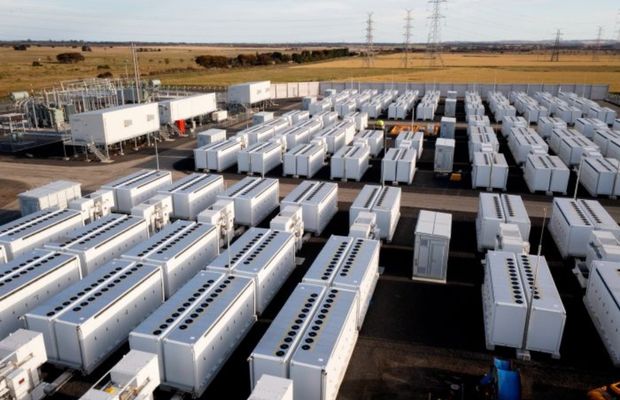Abstract
This paper proposes a consistent algorithm-based coordinated voltage control strategy for solar inverters and energy storage systems in low-voltage distribution networks. It addresses the current lack of coordination between reactive power control of solar inverters and active power control of energy storage systems (ESS), aiming to enhance voltage regulation and improve system economics. The proposed strategy leverages the voltage-cost sensitivity factor (VCSF) to prioritize control actions and employs a group-based approach for cooperative control.

Keywords: solar energy storage battery, solar inverter, consistent algorithm, voltage control, low-voltage distribution network.
1. Introduction
With the increasing integration of solar energy into power systems, particularly in low-voltage distribution networks, challenges related to voltage regulation have become prominent. Solar inverters and energy storage batteries play crucial roles in managing these challenges. However, the lack of coordination between the reactive power control of solar inverters and the active power control of energy storage systems often leads to inefficiencies. This paper presents a novel approach to address this issue.
2. Literature Review
Previous studies have explored various methods for voltage control in distribution networks with high PV penetration. For instance, proposed a consistent algorithm for reactive power compensation of residential solar inverters, but reliance solely on reactive power for voltage regulation limits system capabilities. Similarly, [13] introduced a centralized control strategy involving transformers, energy storage systems, and solar inverters, but centralized control is unsuitable for low-voltage networks with limited communication capabilities. Other studies, have proposed distributed control algorithms and sensitivity-based methods, respectively, but they have their own limitations in terms of complexity, robustness, and economic considerations.
3. Proposed Control Strategy
To address the voltage regulation challenges, this paper proposes a consistent algorithm-based coordinated voltage control strategy for solar inverters and energy storage groups. The strategy leverages the VCSF to prioritize control actions and employs a group-based approach for cooperative control.
3.1. VCSF-Based Grouping and Priority Setting
The VCSF is calculated for different devices and nodes to assess their effectiveness in voltage regulation relative to costs. Based on the VCSF, devices are grouped into voltage control groups (e.g., GV1, GV2), with priority given to groups with higher VCSF values for participation in voltage control.
Table 1. Example of VCSF-Based Grouping
| Group | Nodes Included | VCSF Value | Priority |
|---|---|---|---|
| GV1 | 3, 4, 5, 8 | High | Second |
| GV2 | 7, 9, 13, 14 | Highest | First |
3.2. Control Flowchart
The control flowchart for the proposed strategy is illustrated in Figure 1. When a voltage violation occurs, the node with the most severe violation is identified as the key node for voltage control. The control process is divided into two stages: inverter reactive power control and energy storage active power control.
Figure 1. Control Flowchart of the Proposed Strategy
<img src=”https://example.com/control_flowchart.png” />
3.3. Inverter Reactive Power Control Stage
In this stage, the reactive power utilization rate is used as the consensus variable for distributed control within groups. The reference reactive power for the leader node is updated based on the measured voltage. If the reactive power of solar inverters in a group is exhausted and the voltage violation persists, the group sends a reactive power compensation command to the next group.
3.4. Energy Storage Active Power Control Stage
When the reactive power capacity of solar inverters is insufficient, energy storage devices participate in voltage control. The state of charge (SOC) change is used as the consensus variable for distributed control. Similar to the inverter reactive power control stage, the reference SOC change for the leader node is updated based on voltage differences. If the SOC or charging/discharging power limits of energy storage devices in a group are reached and the voltage violation persists, the group sends an active power control command to the next group.
4. Simulation Results and Analysis
The proposed control strategy is validated through simulations using the IEEE 14-node low-voltage distribution network with integrated solar and energy storage systems. The network configuration.
4.1. Comparison with Single Control Strategies
To analyze the effectiveness of the proposed strategy, it is compared with two single control strategies: S1 (only solar inverter reactive power control) and S2 (only energy storage active power control). The simulation results are presented.
The results show that the proposed strategy (S3) completely mitigates voltage violations through coordinated control of solar inverters and energy storage systems. Compared to S2, S3 significantly reduces the required energy storage capacity and voltage regulation costs.
Table 2. Comparison of Control Effects and Costs
| Strategy | Reactive Power Regulation (kvar·h) | Energy Storage Regulation (kWh) | Total Cost (Yuan) |
|---|---|---|---|
| S1 | – | – | High |
| S2 | – | 50.81 | Moderate |
| S3 | 87.31 | 8.03 | Lowest |
4.2. Comparison with Global Consistency Control
The proposed strategy is further compared with a global consistency control strategy (S4) proposed in [16]. The results indicate that S3 outperforms S4 in terms of both energy storage capacity and voltage regulation costs.
Table 3. Comparison with Global Consistency Control
| Strategy | Energy Storage Regulation Capacity (kWh) | Voltage Regulation Cost (Yuan) |
|---|---|---|
| S4 | 11.38 | 13.10 |
| S3 | 8.03 | 10.67 |
5. Conclusion
This paper presents a consistent algorithm-based coordinated voltage control strategy for solar inverters and energy storage groups in low-voltage distribution networks. The strategy leverages the VCSF for grouping and priority setting, employing a group-based approach for cooperative control. Simulations demonstrate the effectiveness of the proposed strategy in mitigating voltage violations, reducing required energy storage capacity, and lowering voltage regulation costs.
6. Future Work
Future research could explore the integration of advanced communication technologies to enhance the coordination between solar inverters and energy storage systems. Additionally, the impact of different network topologies and solar penetration levels on the performance of the proposed strategy warrants further investigation.
